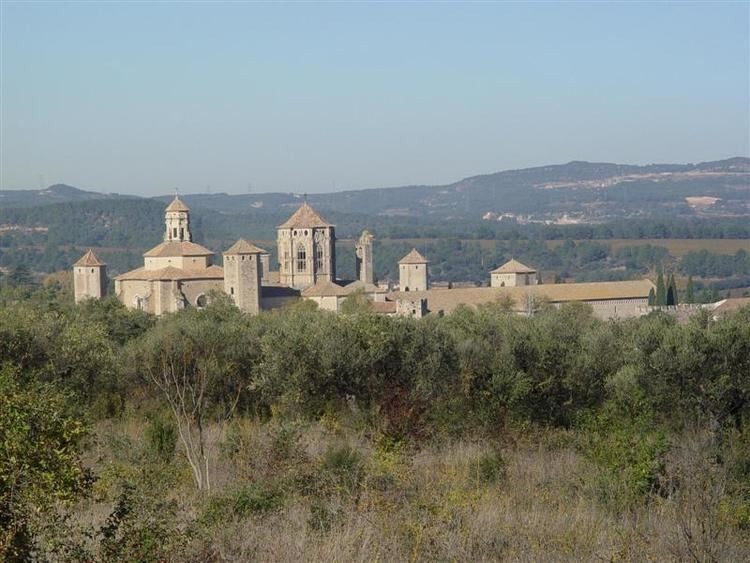Affiliation Roman Catholic Church Website www.poblet.cat Criteria i, iv Province Province of Tarragona Phone +34 977 87 00 89 | Leadership Abott Josep Alegre Architectural type Monastery Opened 1151 Architectural style Catalan Gothic | |
 | ||
Location Vimbodí i Poblet, Catalonia, Spain Address Monestir de Poblet, Muntanyes de Prades, Plaza Corona de Aragón, 11, 43448 Poblet, Tarragona, Spain Similar Santes Creus, Prades Mountains, PortAventura World, Monastery of Santa Maria de, Montserrat | ||
Poblet monastery unesco nhk
The Royal Abbey of Santa Maria de Poblet (Catalan: Reial Monestir de Santa Maria de Poblet) is a Cistercian monastery, founded in 1151, located at the feet of the Prades Mountains, in the comarca of Conca de Barberà, in Catalonia (Spain). It was founded by Cistercian monks from France on lands conquered from the Moors. The main architect was Arnau Bargués.
Contents
This monastery was the first of three sister monasteries, known as the Cistercian triangle, that helped consolidate power in Catalonia in the 12th century. (The other two are Vallbona de les Monges and Santes Creus.)
Significance
Poblet was the royal pantheon of the kings of the Crown of Aragon since James I of Aragon. Some of the most important royal sepulchres have alabaster statues that lie over the tomb. The kings have lion sculptures at their feet, while the queens have dogs.
Peter IV of Aragon (1319 – 1387) made it a condition, under solemn oath at the moment of crowning, that all the Aragonese kings be buried there. Only Ferdinand II of Aragon broke the oath, after his kingdom had been merged with the Kingdom of Castile, and was buried in Granada.
Burials
The following kings and queens of Aragon are buried at the Poblet Monastery:
Additional notable figures interred here include the Hungarian queen Beatrice of Naples (1508) and Philip Wharton, 1st Duke of Wharton (1731).
The tombs of the royals were restored by the Catalan sculptor Frederic Marés in 1948.
Ruin and rebuilding
The monastery, which had already suffered damage during the First Carlist War, was closed down due to the Ecclesiastical Confiscations of Mendizábal in 1835 during Isabella II of Spain's rule. The Desamortización or secularization of the place brought monastic life to an end. On 24 July of the same year the monastery was plundered by representatives of the Mendizábal's government and unruly mobs. During the events all valuable paintings and furniture were removed and dispersed. Also parts of the monastery were destroyed owing to fires.
In the years that followed the Poblet Monastery fell into disrepair and ruin; some of the main roofs caved in. The tombs of the rulers of the Kingdom of Aragon were desecrated and the remains were transferred and kept for a while in the Cathedral of Tarragona, thanks to the intervention of Rev. Antoni Serret from the neighboring town of L'Espluga.
Finally the monastery was refounded in 1940 by Italian monks of the same order and repair and reconstruction began. Close to the entrance of the church one building has been kept in a ruined state as a reminder. Remains of the deceased of the ancient Royal House of Aragon were put back in sepulchres, but they are now commingled.
Poblet belongs to the Cistercian Congregation of the Crown of Aragon, along with Santa Maria de Solius and convents such as Santa Maria de Vallbona and Santa Maria de Valldonzella. The Abbot of Poblet is the ex officio chairman of the Congregation. Today the monastic community of Poblet is composed of 29 professed monks, 1 regular oblate, 1 novice and 2 familiars.
Poblet Monastery has been a UNESCO World Heritage Site since 1991. The altar (1527) was sculpted by Damián Forment.
In 2010, Spanish architect Mariano Bayón designed the Poblet Monastery Guesthouse.
